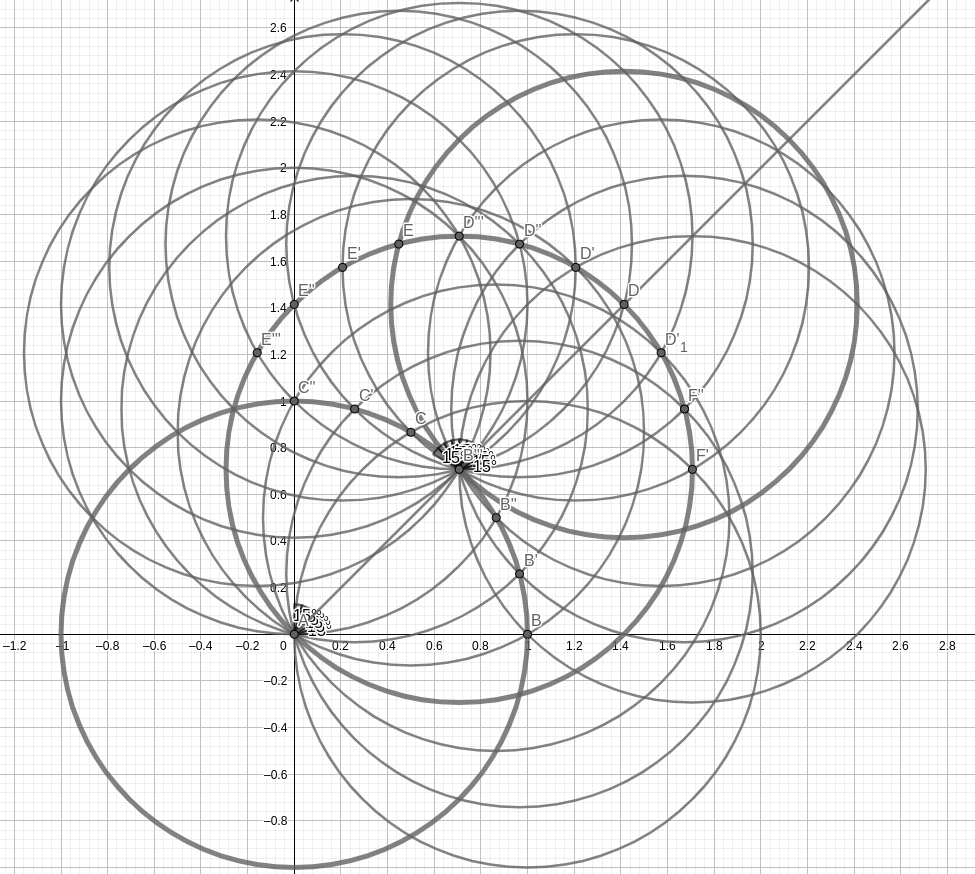I think I've made a graph capable of approximate on large scale the euclidean space.
The method to make it is literally "cheating" because is produced iterating a simple algorithm on the euclidean 2D space to produce a suitable mapping of the space dependant by a single parameter (an angle that is obtainable dividing by an integer
$2\pi$, so in some sense a single positive integer)
 In the image (I apologize for GeoGebra, but I used the first thing I had available on the computer), I've used an angle of
$15°$.
In the image (I apologize for GeoGebra, but I used the first thing I had available on the computer), I've used an angle of
$15°$.
Here you can find the project (I apologize again for having done the constructions manually, I'm thinking to write a real program that maybe compute some macroscopic distance and angle). If you change the partition angle (with
$1°$ is visible) the partition cover finer and finer way the space.
The use of a
$\frac{2\pi}{n}$ angle is needed to obtain a FINITE graph from the computation.
This with the fact that our universe is actually finite, is sufficient to say that at the end of the algorithm we have a finite number of nodes and edges.
I'm going right now to make some suitable test at various scale.
An important needed step of the algorithm is to remove the double-counting of some points, and in the case, the node already exists, connect the node for which the algorithm is being applied with the existing node instead of introducing a new one.
To make sure the mapping preserves the circular symmetry from every point, the algorithm needs to be run for every node in the graph. The graph can be seen as completed when a successive application of the algorithm on any node, preserve the graph.
I suppose this is possible from the finite space to map and from the
$\frac{2\pi}{n}$ angle used for the partition.
PS: I apologize if I have not explained myself clearly, I prepare some programs and as soon as possible I publish them to make the concept clearer and finally have numbers in hand.